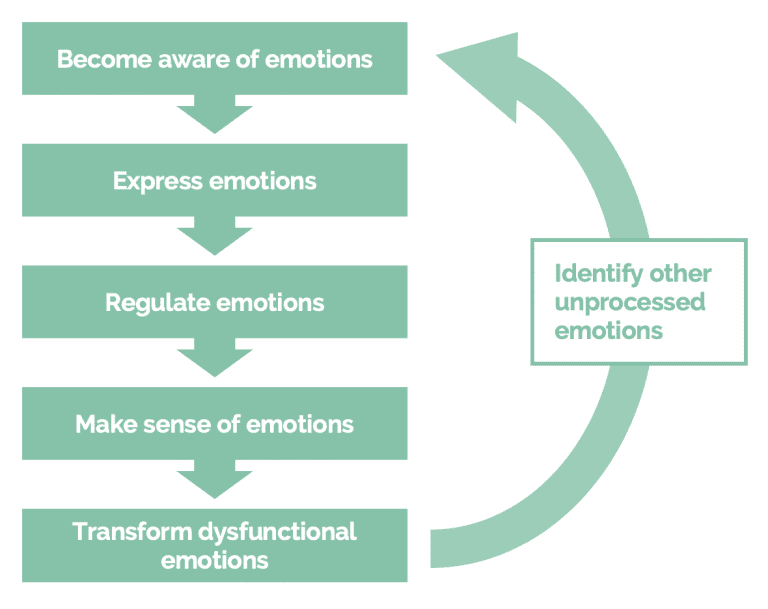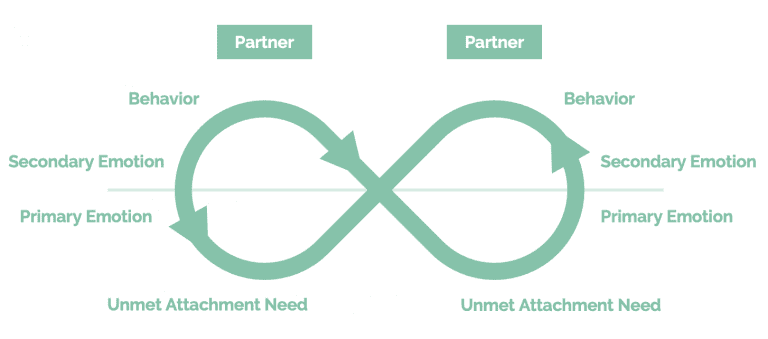Tokyo Mental Health is here to support you and provide you with the help you need.
What are the Key Principles of Emotionally Focused Therapy?
Emotionally focused therapy (EFT) was developed by Sue Johnson and Les Greenberg in 1985. It is best known as a couple therapy intervention but also widely used in individual therapy and family therapy. EFT believes emotion is the key to our behavioral response and by ‘changing how we experience emotions’, our behaviors also change. It also includes principles from Bowlby’s attachment theory, experiential theory, and relational systemic theory which leads to EFT therapists focus on how we interact in relationships in a non-pathologizing perspective.
A central premise of EFT is that growing up, we organize our experience into ‘emotion schemes’ which include feelings, action tendencies, and beliefs. In other words, how we experience our life and interact with others affects how we feel and regulate our emotions.
We can generally categorize our emotion response into the three types below:
- Primary emotions: This is our first reaction to events. It includes both adaptive and maladaptive responses. Eg Feel hurt when being rejected.
- Secondary emotions: Our emotional reactions to primary emotions that interfere with our function. This is often what clients bring to therapy. Eg Feel angry when being rejected – anger is actually a response to the primary emotion of hurt.
- Instrumental emotions: These are the emotions that motivate our attempt to control our environment. We learned to use these kinds of emotions based on our past experience. Eg Use anger to get people to pay attention.
An emotion scheme in EFT could look like this:
Jane always got shut down by her parents when sharing how hurtful it was for her to be rejected at school. Her parents often told her to be OK when being rejected or else she’s ‘too weak to deal with rejection’. She also found out her parents paid more attention to her when she was angry about what happened at school. Jane developed the belief ‘it is weak to feel hurt’ and often reacts with anger when being rejected in relationships.

How Does Emotionally Focused Therapy Work?
Study shows people diagnosed with depression had more negative emotion schemes in their early experience. The accumulated ‘unprocessed’ emotions and negative emotion schemes turn into our vulnerability, which leads to emotional distress when triggered. To reduce the distress, we need to fully process all our emotions including the ones from childhood.
There are five steps in EFT to process emotions. First of all, we need to become aware of emotions. This means we want to identify and name the emotions, especially the primary ones. Secondly, express emotions – both secondary and primary emotions – by saying it out loud, journaling, or talking to someone etc. Thirdly, while accepting the existence of the emotions, we learn how to regulate emotions with some coping strategies such as breathing techniques. Next, make sense of emotions – we take time to observe and investigate our pattern in experiencing emotions and see if we can develop narratives around it. We often recognize our emotion schemes in this step. Lastly, transform dysfunctional emotions by identifying other emotions we are also experiencing in the situation, or developing a new emotion scheme based on a new interpersonal experience.
Emotion is not our enemy. It is the result of what we experience, which means emotional distress is trying to give us some hint of the discomfort we’re experiencing. The goal of EFT is not simply to process all emotions, but develop resilience in accessing our emotion schemes which help with the process of transforming dysfunctional emotions.
What is Emotionally Focused Couples Therapy?
Emotionally focused couples therapy (EFCT) is one of the most well-known approaches in couples therapy. When understanding what emotionally focused couples therapy is, we need to take a look at the importance of attachment in relationships. The essence of a secure attachment is mutual emotional accessibility and responsiveness. This provides the sense of safety in commitment – our partner is always there. We all have a fundamental need to feel safe and loved, therefore, EFT assumes healthy relationships involve emotional contact and a sense of safety. Presenting problems in relationships often revolve around insecurity in attachment. EFT aims to explore primary and secondary emotions, change ineffective patterns of interactions, and enhance emotional connections in relationships.
Below is a brief introduction of structure in emotionally focused couples therapy:
Stage One: Assessment and Cycle De-escalation
Step 1: Identify presenting issues
Step 2: Understand the ineffective interaction patterns
Step 3: Recognize unacknowledged underlying emotions
Step 4: Reframe issues and emotions

Stage Two: Changing Interaction patterns
Step 5: Identify needs and express emotions
Step 6: Introduce acceptance and compassion
Step 7: Reduce communication that leads to conflict
Stage Three: Consolidation
Step 8: Replace problem communication with discussion around solutions using new interaction style
Step 9: Apply new skills in real time
How Popular is Emotionally Focused Therapy?
Emotionally focused therapy is popular with individuals and couples who would like to work on deepening understanding of their emotional experience, developing emotion regulation skills, building secure attachments, and changing negative patterns of interactions. The focus on strengthening our emotional and interpersonal bonds that can help us restore our emotional balance and increase the sense of connection in different relationships.
A rich body of research has demonstrated emotionally focused couples therapy can help couples by increasing marital satisfaction, increasing commitment level, and decreasing intimacy anxiety and infidelity. Studies also show that the changes and benefits following EFT can last for years. Plenty of research also has shown trauma survivors reported decreases in trauma symptoms after receiving EFT in couples therapy. Since secure attachment is associated with health and well-being, it can help us develop our resilience in regulating the neurophysiological stress response.
References
- Beasley, C. C., & Ager, R. (2019). Emotionally focused couples therapy: A systematic review of its effectiveness over the past 19 years. Journal of Evidence-Based Social Work, 16(2), 144-159.
- Brubacher, L. (2017). Emotionally focused individual therapy: An attachment-based experiential/systemic perspective. Person-Centered & Experiential Psychotherapies, 16(1), 50-67.
- Falahzade, H., Sanai Zaker, B., & Farzad, V. (2013). A study on the effectiveness of emotionally focused couple therapy and integrated systemic couple therapy on reducing intimacy anxiety. Journal of Family Research, 8(4), 465-484.
- Greenberg, L. S., & Watson, J. C. (2006). Emotion-focused therapy for depression. American Psychological Association.
- Greenman, P. S., & Johnson, S. M. (2022). Emotionally focused therapy: Attachment, connection, and health. Current opinion in psychology, 43, 146-150.
- Johnson, S. M. (2019). Attachment theory in practice: Emotionally focused therapy (EFT) with individuals, couples, and families. Guilford Publications.
- Johnson, S. M. (2019). The practice of emotionally focused couple therapy: Creating connection. Routledge.
- Wiebe, S. A., & Johnson, S. M. (2017). Creating relationships that foster resilience in Emotionally Focused Therapy. Current Opinion in Psychology, 13, 65-69.